How to Choose the dj stage light manufacturer and supplier in us?
- Introduction: Why picking the right DJ stage light manufacturer matters
- Understand buyer intent and set clear technical needs
- Key technical questions to answer
- Must-have certifications and compliance for the US market
- Essential certificates
- Evaluate product quality and core lighting specs
- Assess manufacturer capabilities: production, R&D and IP
- What to ask manufacturers
- Compare types of suppliers: Domestic US vs Overseas OEM/ODM
- Logistics, lead times and inventory strategy for US buyers
- Quality checks, samples and testing procedures
- On-sample tests to conduct
- Commercial terms: MOQ, pricing structure, warranties and payment
- After-sales support, spare parts and repairability
- Checklist for after-sales
- How to validate a manufacturer: audit, references and independent testing
- Case study: Why choose an experienced OEM like LQE for DJ stage light supply
- Conclusion: A step-by-step checklist to choose your DJ stage light manufacturer
- Frequently Asked Questions
- Sources and references
Introduction: Why picking the right DJ stage light manufacturer matters
When sourcing DJ stage lights for retail, rental, installations, or event production in the US, your choice of manufacturer and supplier affects product performance, safety compliance, lead times, and total cost of ownership. Buyers search for dj stage light suppliers because they want fixtures that deliver consistent light output, reliable control (DMX/RDM), energy efficiency, proper certifications, and dependable after-sales support. This guide helps event producers, resellers, rental companies, and venue buyers evaluate potential manufacturers and suppliers so you get fixtures that meet US market requirements and your business goals.
Understand buyer intent and set clear technical needs
Before contacting manufacturers, define your use case and technical requirements. The most common intents when searching for dj stage light include purchasing for club/entertainment venues, rental fleets, retail sales, or system integration for theaters and houses of worship.
Key technical questions to answer
- Application: nightclub, DJ booth, concert, theater, or rental?
- Fixture type: moving head, static PAR, wash, beam, spot, or hybrid?
- Light output and optics: lumen or lux requirement at a given distance, beam angle needed?
- Control protocol: DMX512, RDM, Art-Net, sACN?
- Power and powercon or Edison connectors for US installations?
- Durability: IP rating (if outdoor) and expected lifetime?
- Budget, expected order volume, and acceptable lead time?
Must-have certifications and compliance for the US market
US buyers must ensure imported lighting meets regulatory and safety standards. Choose manufacturers who provide the right certificates and test reports to clear customs and satisfy venue requirements.
Essential certificates
- ETL/UL or FCC/ETL listing for electrical safety and EMC where applicable (ETL or UL is often required by US venues).
- RoHS compliance for hazardous substances.
- CE (if also selling to EU clients); helps show conformity to EU directives for global buyers.
- IP rating for outdoor fixtures (e.g., IP65).
- ANSI/ESTA standards for control protocols: DMX512 / E1.11 and RDM / E1.20 compliance is important for interoperability.
Evaluate product quality and core lighting specs
Inspect product specifications closely. Some numbers to verify when comparing dj stage light options:
| Specification | Typical/Recommended Value | Why it matters |
|---|---|---|
| LED lifespan | 35,000–50,000 hours | Long life reduces maintenance and replacement costs. |
| Energy savings vs discharge lamps | Up to 60–80% lower power consumption | Reduces running costs and heat load (DOE Solid-State Lighting data). |
| CRI (Color Rendering Index) | 70–90 (higher for color-critical applications) | Better color rendering for accurate stage colors. |
| Beam angle | 6°–60° (depends on fixture type) | Determines spread vs. throw — choose per application. |
| Control | DMX512 / RDM, Art-Net / sACN | Essential for integration with consoles and networks (ANSI/ESTA E1.11). |
| Warranty | 2–5 years typical | Reflects manufacturer confidence and support costs. |
Assess manufacturer capabilities: production, R&D and IP
For reliable supply, verify capacity, quality-control systems, and R&D investment. Manufacturers with strong R&D and patents often deliver more stable performance and quicker product improvements.
What to ask manufacturers
- Annual production capacity and peak-order handling (e.g., can they make tens of thousands per year?).
- Factory size, number of technical staff, and assembly lines.
- Number of patents and ongoing R&D projects — this indicates innovation maturity.
- Quality control: do they have ISO 9001, in-line testing, aging tests, and batch traceability?
Example: LQE was founded in 2008 and is headquartered in Foshan, China. LQE's production base covers about 10,000 m², a stated annual production capacity of 100,000 fixtures, and holds around 80 national patents — factors that reflect substantial R&D and manufacturing capability for mid- to high-end digital stage lighting.
Compare types of suppliers: Domestic US vs Overseas OEM/ODM
The choice between a US domestic supplier and an overseas OEM/ODM (e.g., a Chinese factory) involves trade-offs in cost, lead times, and customization.
| Criteria | US-based Manufacturer/Supplier | Overseas OEM/ODM (e.g., China) |
|---|---|---|
| Unit cost | Higher (labor and overhead) | Lower unit cost, better for volume |
| Lead time | Shorter domestic lead times | Longer manufacturing + shipping time (but scalable) |
| MOQ | Lower MOQs possible | Often higher MOQs but negotiable |
| Customization | Good; faster small-run changes | Excellent for new product design and custom OEM/ODM |
| Certifications | Typically already UL/ETL certified | Can obtain ETL/UL but require testing and time |
| After-sales | Faster on-site support | Remote support + replacement spares; warehouses in US can help |
Logistics, lead times and inventory strategy for US buyers
Plan inventory and delivery terms based on your business model. Important logistics considerations:
- Typical manufacturing lead time: 4–8 weeks for mass production after sample approval (varies by order size and season).
- Shipping: sea freight to US ports typically 2–6 weeks; air freight is faster but costly.
- Customs clearance and certification documentation must be ready to avoid delays.
- Consider local warehousing or a distribution partner in the US to shorten fulfillment times and improve returns handling.
Quality checks, samples and testing procedures
Never skip sample testing. Always request functional samples and run the following checks before large orders:
On-sample tests to conduct
- Electrical safety check (leakage, insulation, ground continuity).
- Photometric test (lumens, lux at distances, beam shape).
- Color tests (RGB mixing, white balance, CRI).
- Control compatibility (DMX addressing, RDM discovery), verify E1.11 compliance.
- Thermal and aging: run 48–168 hours continuous at full output to find early failures.
Commercial terms: MOQ, pricing structure, warranties and payment
Negotiate clear commercial terms to avoid surprises.
- MOQ: clarify sample policy and production MOQ; many OEMs accept small sample quantities but higher MOQs for mass production.
- Pricing: ask for price tiers by volume and include options for custom packaging or private labeling.
- Warranty: standard 2-year warranty is common; 3–5 years indicates stronger confidence. Ensure warranty process in US is clear.
- Payment terms: common terms are 30% deposit and 70% before shipment, or LC for large projects. Negotiate acceptable terms to your cash flow situation.
After-sales support, spare parts and repairability
Ask about spare parts provisioning and repair networks. For rental and pro AV businesses, fast access to spare LED modules, power supplies, and motors is crucial.
Checklist for after-sales
- Availability of spare parts and typical lead time.
- Local repair centers or authorized service agents in the US.
- Remote technical support and firmware update processes.
- Clear RMA and returns policy with defined SLA.
How to validate a manufacturer: audit, references and independent testing
Before awarding a major contract, perform validation steps:
- Factory audit (on-site or third-party inspection) to verify production claims and quality systems.
- Request client references in the US and examples of projects (venues, tours, integrators).
- Ask for independent lab test reports (ETL/UL, EMC, photometric reports).
Case study: Why choose an experienced OEM like LQE for DJ stage light supply
For buyers seeking a balance of technical capability, intellectual property, large-scale production and experience exporting to global markets, an OEM like LQE offers concrete advantages:
- Established since 2008 with a 10,000 m² production base and annual production capacity of ~100,000 fixtures — suitable for mid-to-large volume needs.
- Focused on mid- and high-end digital stage lighting with 80 national patents, indicating sustained R&D investment and product innovations.
- Diverse product range: moving heads, static lights, washes, spots, suitable for theaters, concerts, clubs, houses of worship and rent/retail markets.
- OEM/ODM experience helps buyers secure custom designs, private labeling, and US-market-ready certifications when required.
Conclusion: A step-by-step checklist to choose your DJ stage light manufacturer
Follow this practical checklist to decide with confidence:
- Define your use case and technical specifications (fixture type, beam, control, IP rating).
- Request samples and conduct photometric, electrical and aging tests.
- Verify certifications needed for US sales (ETL/UL, FCC, RoHS, DMX compliance).
- Assess factory capacity, R&D, patents and QC processes (ISO, aging tests).
- Compare commercial terms: MOQ, pricing tiers, lead time, warranty, payment terms.
- Check after-sales support: spare parts, US warehousing or service agents, RMA policies.
- Perform a factory audit or use a third-party inspection and request references.
Choosing the right dj stage light manufacturer is a combination of technical due diligence, commercial negotiation, and risk management. Companies like LQE demonstrate the blend of production scale, R&D and product diversity US buyers often need for consistent supply and competitive pricing.
Frequently Asked Questions
Q: How long does it typically take from placing an order to receiving DJ stage lights in the US?A: Typical lead time is 4–8 weeks for mass production after sample approval, plus 2–6 weeks shipping by sea. Air freight shortens transit time but increases cost.
Q: What certifications should I insist on for fixtures used in US venues?A: ETL/UL for electrical safety, FCC for EMI where applicable, RoHS for hazardous substances, and DMX/RDM (ANSI/ESTA E1.11 / E1.20) for control compatibility.
Q: Is it better to buy from a US supplier or an overseas OEM?A: It depends. US suppliers give faster local support and shorter lead times; overseas OEMs typically provide lower unit costs and greater flexibility for OEM/ODM customization. Consider hybrid strategies (overseas manufacturing + US warehousing).
Q: What warranty term is standard for professional DJ stage lights?A: 2 years is common; 3–5 years indicates stronger manufacturer confidence and may be preferred for rental fleets.
Q: How do I test a sample properly before placing a bulk order?A: Run photometric tests (lumen/lux), color accuracy tests (CRI, color mixing), continuous aging tests (48–168 hours), electrical safety checks and DMX/RDM control verification.
Q: What payment terms should I accept when dealing with an overseas manufacturer?A: Common terms are 30% deposit and 70% balance before shipment. For larger contracts, consider a letter of credit or escrow arrangement. Negotiate based on trust and order size.
Sources and references
- U.S. Department of Energy (DOE) — Solid-State Lighting Program (LED efficiency and lifespan guidance)
- ANSI/ESTA — E1.11 (DMX512-A) and E1.20 (RDM) standards for lighting control protocols
- UL/ETL testing requirements for lighting products in the United States
- RoHS Directive and general hazardous substance restrictions (commonly required for exported electronics)
- Industry best practices for QA and factory audits (third-party inspection firms and ISO 9001 guidance)
Beam, Spot, and Wash: Moving Head Light Types Explained
Best led stage lights manufacturers and supplier brands in us
How to Choose the stage floor lights manufacturer and supplier in us?
Top stage light Manufacturers and Suppliers
1000w
Does LQE Offer a Stage Light Design Solution?
LQE experienced team glad to supply a stage lighting configuration design solution or suggestion for projector who don’t have much experience in lighting design, project, theatre and studio.
Distributor
Do you offer OEM/ODM support for distributors?
Yes, as a professional OEM/ODM manufacturer, we support brand customization, including logo printing, packaging design, and even custom features based on project needs.
What is your typical lead time for distributor orders?
Our standard production lead time is 15–30 working days depending on order volume and customization requirements. For stocked models or repeat orders, we can offer shorter delivery times.
Can LQE help with product training and technical guidance?
Absolutely. We offer remote training sessions, user manuals, installation guides, and continuous technical support to help your team understand and sell our products with confidence.
How can I apply to become a distributor?
Simply fill out the contact form on this page or email us directly with your company information, market background, and cooperation intention. Our sales team will get in touch with you within 1–2 business days.
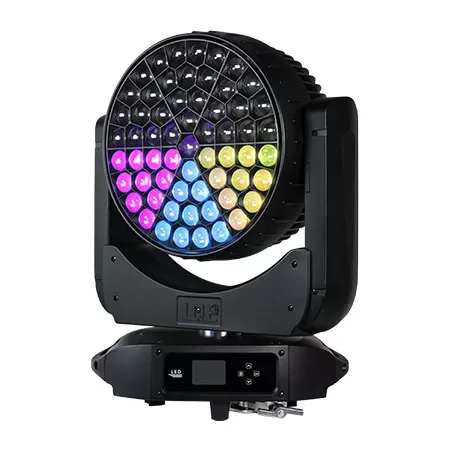
1000w 61x40w RGBW Stage Moving Head Wash Light LW1000
1000W 61x40W LED RGBW Mulichips Moving Head Wash Lights with Zoom (5°–50°), Covering Large Range and Long Distance. Designed to deliver a 5°–50° ultra-large zoom range to achieve a greater wash effect, illuminating stages and events with stunning lighting effects.

600w 19x40w RGBW Stage Moving Head Wash Light LW600 Zoom IP20
600W 19x40W LED RGBW Mulichips Moving Head Wash Lights with Zoom (5°–50°), Covering Large Range and Long Distance. IP20: Designed to deliver a 5°–50° ultra-large zoom range to achieve a greater wash effect, illuminating stages and events with stunning ring control lighting effects.

LED Moving Head Stage Wash Light LW200Z
The versatile moving head stage light provides a powerful lighting solution for theaters, concerts, and large outdoor performances. Suitable for theaters, TV stations, entertainment stages, and large outdoor performance scenes.
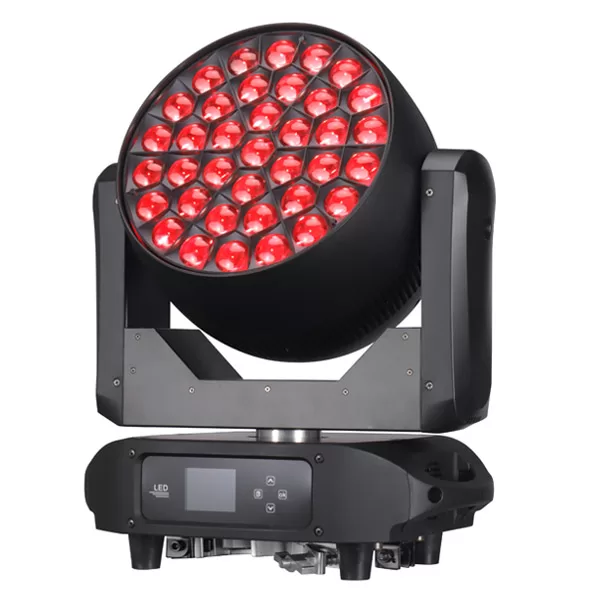
800w 37x40w RGBW Stage Moving Head Wash Light LW800
800W 37x40W LED RGBW Mulichips Moving Head Wash Lights with Zoom (5°-50°), Covering Large Range and Long Distance. Designed to deliver a 5°–50° ultra-large zoom range to achieve a greater wash effect, illuminating stages and events with stunning ring control lighting effects.

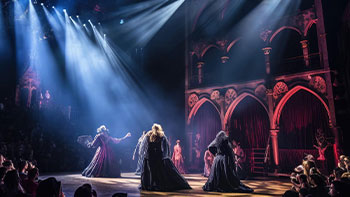
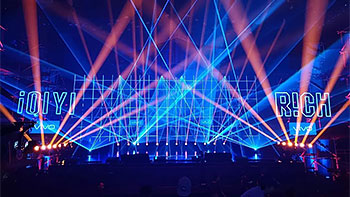

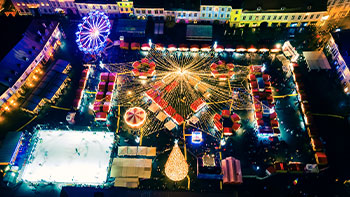








Linkedin
YouTube
Whatsapp: +8618924548390
TikTok